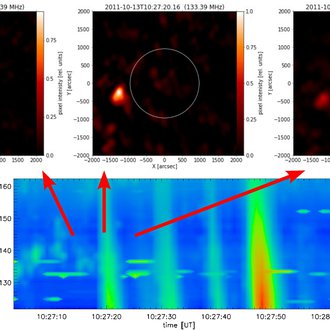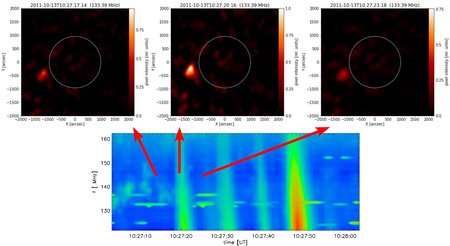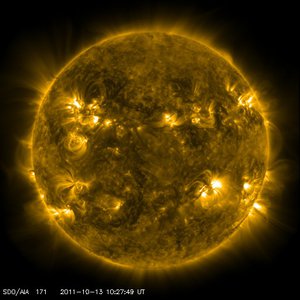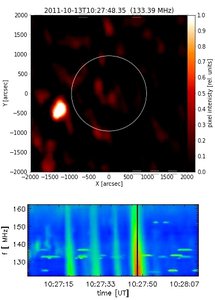Spectroscopic imaging of the corona
Spectroscopic imaging of the corona based on new-technology equipment - LOFAR (the LOw Frequency ARray) and solar applications.
The solar physicists of the Leibniz-Institut fuer Astrophysik Potsdam (AIP) observed the Sun with the novel radio telescope LOFAR in collaboration with the LOFAR team at ASTRON in the Netherlands.
Here, LOFAR's first simultaneous spectroscopic and imaging observations of a solar radio burst are presented:
Within the commissioning phase, the Sun was observed by LOFAR on October 13, 2011. At the bottom of figure 1, the dynamic radio spectrum of some minutes of the record is presented in the frequency range 122-162 MHz. It shows four so-called type III radio bursts. They appear as the rapidly drifting stripes of enhanced radio emission from high to low frequencies. They are signatures of beams of energetic electrons generated by a flare on the Sun. If they travel along open magnetic field lines through the corona, they excite along their path radio radiation manifesting as type III bursts.
On top of our figure 1, the corresponding radio images at 133 MHz are presented before (left), during (middle), and after (right) the occurrence of the type III burst at 10:27:18 UT. The white circle indicates the limb of the visible disc of the Sun. The radio images are produced using the solar imaging pipeline developed at the AIP. The brightening of the radio source during the type III burst is seen at the South-East limb of the Sun.
An EUV image of the Sun taken at the same time is shown in figure 2. It was recorded by the instrument AIA aboard NASA's satellite "Solar Dynamics Observatory". The comparison of both images reveals that the radio source is located in the corona above an active region at the South-East limb.
These observations impressively demonstrate that LOFAR really works as a spectroscopic solar imager in the low frequency radio range. It is a novelty in solar physics.
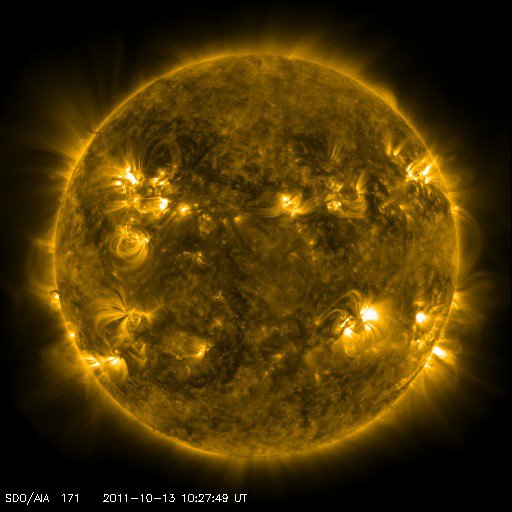
EUV image of the Sun.
Credit: SDO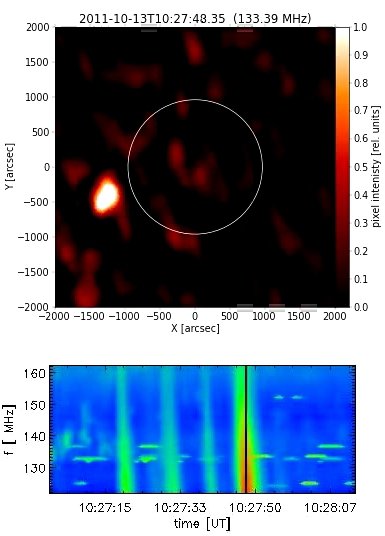
LOFAR observation.
Credit: AIPImages
Figure 1.
Big screen size [1000 x 547, 70 KB]
Original size [1741 x 954, 140 KB]
EUV image of the Sun.
LOFAR observation.
